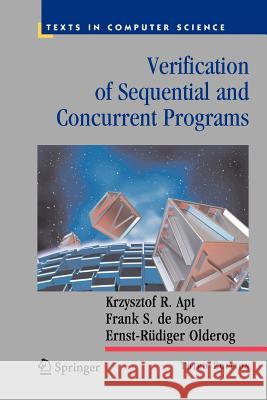Verification of Sequential and Concurrent Programs » książka
Verification of Sequential and Concurrent Programs
ISBN-13: 9781447125136 / Angielski / Miękka / 2012 / 502 str.
HIS BOOK CONTAINS a most comprehensive text that presents syntax-directed and compositional methods for the formal veri?- T cation of programs. The approach is not language-bounded in the sense that it covers a large variety of programming models and features that appear in most modern programming languages. It covers the classes of - quential and parallel, deterministic and non-deterministic, distributed and object-oriented programs. For each of the classes it presents the various c- teria of correctness that are relevant for these classes, such as interference freedom, deadlock freedom, and appropriate notions of liveness for parallel programs. Also, special proof rules appropriate for each class of programs are presented. In spite of this diversity due to the rich program classes cons- ered, there exist a uniform underlying theory of veri?cation which is synt- oriented and promotes compositional approaches to veri?cation, leading to scalability of the methods. The text strikes the proper balance between mathematical rigor and - dactic introduction of increasingly complex rules in an incremental manner, adequately supported by state-of-the-art examples. As a result it can serve as a textbook for a variety of courses on di?erent levels and varying durations. It can also serve as a reference book for researchers in the theory of veri?- tion, in particular since it contains much material that never before appeared in book form. This is specially true for the treatment of object-oriented p- grams which is entirely novel and is strikingly elegant.
This widely anticipated third edition provides a systematic exploration of one of the most common approaches to program verification, known as the assertional approach. This approach is applied to deterministic and nondeterministic sequential programs of varying complexity, together with both parallel and distributed concurrent programs. The expanded content also includes coverage of the verification of object-oriented programs. For each class of programs, the authors introduce proof systems for the verification of partial and total correctness, justified formally in corresponding soundness theorems. Case studies supplied throughout the book demonstrate the use of the proof systems and formally verify solutions to classical problems, such as producer/consumer and mutual exclusion. This modern update of a classic, reader-friendly textbook is perfect for an introductory course on program verification for advanced undergraduate or graduate students. Outlines for possible courses are suggested in the Preface.











